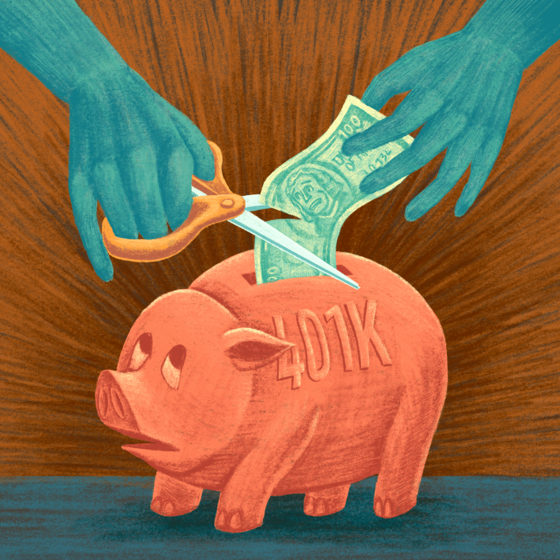Lower-Income Employees Are More Likely to Remain at 401(k) Defaults, Even If It Costs Them Money
Automatically enrolling employees in retirement plans is a powerful tool for increasing savings. But Yale SOM’s James Choi and his coauthors find that once enrolled, people with lower incomes are more likely to remain at default contribution rates, even if they aren’t optimal, and argue policymakers should set automatic enrollment defaults with that fact in mind.
Several years ago, Yale SOM’s James Choi had the chance to study an unusual retirement savings plan. At a large company in the United Kingdom, employees were automatically enrolled at a default contribution rate of 12% of their income—a percentage several times higher than standard default contribution rates, which generally range between 1% and 6%.
Choi and his coauthors noticed something striking about the company, which is the subject of a new study in the Journal of Pension Economics and Finance: within a year of enrollment, only 25% of employees remained at the default rate. In previous studies of automatic enrollment in retirement savings plans with a default contribution rate of 3%, a higher percentage of employees had stayed put.
“Automatic defaults are powerful, but not all powerful,” Choi explains. “If you set the default to something fairly unattractive, fewer people are going to stick with it.”
In the case of the studied firm, the default rate was unattractive not just because it was higher than many people might have been comfortable with, but because, in order to qualify for matching contributions, an employee needed to contribute more than 12%. Staying put was actually the worst decision (or non-decision) an employee could make, Choi points out.
“If you have the wherewithal to save 12% per year, you would be better off saving 6% percent one year and 18% the next year,” he says. “By pulsing between high and low contribution rates across years, you end up getting some match rather than no match.”
Given that reality, the more interesting question for Choi and his coauthors—and the most potentially pertinent finding for policymakers—was who remained at the default contribution rate: employees with lower incomes. Specifically, those who stayed at the default had an average salary that was one-third lower than employees who opted out to non-default contribution rates immediately adjacent to the default. That finding is consistent with existing research showing that people with low incomes are generally less financially literate than people with higher incomes.
“We do know that financial literacy has an income and wealth gradient, and that it’s associated with better financial decision-making,” Choi explains. “It seems natural that if you don’t know what to do, you end up freezing and remaining at the default status quo.”
Choi is quick to note the study’s limitations: a small sample size of 671 people, with no control group of people who were not automatically enrolled in the plan. But, considering that many policies surrounding retirement savings are designed to encourage low-income employees to participate, the implications could be far-reaching.
Choi is a leading expert on household and behavioral finance. His early work on automatic enrollment in retirement savings plans—including a pair of articles he coauthored in 2002 and 2004—helped bring about passage of the Pension Protection Act of 2006, a U.S. law that encourages employers to automatically enroll their employees in retirement savings plans. The research in those papers showed that the percentage of employees participating in plans drastically increased with automatic enrollment—with the rate rising from 38% to 96% one year after hire in the case of one company.
“The basic finding was overwhelming,” he says. “Here was this thing you could do that wasn’t coercing anybody—just nudging them in one way. It was a very popular measure and remains popular.”
Evidence that low-income employees remain at a default contribution rate even when it is not optimal for their savings may be an indication of how future nudges should be set, Choi says.
Policymakers and corporate executives should “take into account who is going to end up accepting the default,” he says. “Since low-income people are more likely to stick to the default, defaults should be set preferentially weighting the optimal choices for low-income individuals.”
